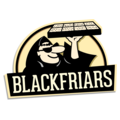The History of the Village of Forth
The village of Forth is situated in Clydesdale midway between Edinburgh and Glasgow

History of Forth.
It is first mentioned in a great seal charter of 1599, East and West Forth Farms are mentioned in a Crown Charter dated 14th June, 1634 as part of the Barony of Carnwath , although the area is thought to be inhabited by the Damnoniiover tribe over 2000 years ago
The name Forth otherwise known as The Forth is thought to mean " the open air " as this can be found in the Chambers Scots Dictionary.
There are various other views on this including the Fourth stop on the mail coach run.
The earliest known employment was handloom weaving . In later years old Forth`s population was around 170 and consisted of a number of thatched houses built in rows, around the cross roads, at this stage in the development of the village, weavers had been replaced by ironstone, limestone and coalminers.
On a map dated 1820 there were only a few scattered houses between Thomson's General Store and Dean Syke, from there the next building was Carmuir House. The lesser building attached to the house, formerly a cottage, now known as Bobby's Supermarket, earlier Gracie Dempsters sweetie shop, previously Bill Griffin's with petrol pump, B.P. His father Sanny Griffin was responsible for the present Central Garage Main Street opened 1926. The present bank premises at one time a saddlers shop, belonging to John Wilson. Marshall and Smith buildings, constructed in 1866, Smith's shop a typical village "Jenny a` things", also cycle agents, the Cyclist Touring Club sign is still displayed above the shop door.

The same year a Police Station, first in the village, was erected in Main Street, now a health clinic.

The present Post Office, formely Adam and Philip McKendrick's General Store, a member of that family made his fortune in Pretoria, South Africa, came home in 1900, extended the building by adding that part over the close, naming the whole property Pretoria Buildings.
McGiliavery the Butcher, previously owned by Porteous, (now retired) also butchers and bakers, built around 1860.
Forth Parish Church built in 1875, the stone used in its construction was quarried at Hailstonegreen, transported directly to the site, as the Masonic Building was not erected until 1880.
In those early years people made their own entertainment, getting together in each others houses for musical evenings. Open air dances were popular, some held at Netherton cross roads, farm workers and villagers participating, fiddles, melodians and mouth organs provided the music. Later dances and socials were held in the school as in other country places, performing bears with their keepers, also jugglers, street singers and travelling musicians visited the village, bringing a little colour and light relief into the peoples' everyday life. Dominoes were a popular pastime,
Wilsontown ironworks just outside Forth was a main employer in the area , and was founded by the Wilson brothers from which it takes its name. This opened in 1800 until its closure in 1940.
The railway station at Wilsontown opened in 1867 and made a vast difference to the local area , however as the work declined so did its use and it closed in the 1950s.

Forth brass band was founded in 1868 and after being very successful wound up in 1988
Tinto cinema opened its doors in 1935 and also was very popular but with television making its mark this also closed in 1965.
Forth School was built about 1815.
---------------One of the earliest horse and cab hirers was James McCulloch of the Inns, much later the McCallums, with cab and horse drawn hearse followed by Peter Tennent, whose business began with a horse and cart, and has expanded to a succesful coach and road haulage firm, known throughout Scotland and England.
There being a large farming community in the district, Forth Agricultural Society held their annual show in the Pleasure Park on the fourth Friday of June. An account of the show for the year 1882 was:- President: George Darling of East Forth and Cleugh, Vice President: John Lawson of Guildhouses, "The Gilles", Membership 86, Annual Subscription 5/-, Entries 280, Prize Money paid out £64 10/-, also 2 medals and 2 cups. This was a popular day out for the villagers and as the cows at the show, required to be milked as usual, local women collected it in pails for their own use.
In Forth like the neighbouring villages ofWilsontown and Haywood, there was a great community spirit and involvement. They came together, in a great many social and sporting events, some partcipating, others spectating but everyone was involved, as the village progressed two halls were built, the Victoria situated to the rear, between the Bank building and the old Post Office, the Albert, behind McCallums Baker Shop, now the Talisker,
. Strange as it may seem Forth had a cricket team, Hawkwood Terrace is built on the site of the pitch, members of the team were Jimmy Tennant, Butcher; George Orr, Greenwell and Thomas McCafferty Bricklayer, who was later accidently killed in America.
The advent of the Great War had a devastating effect on the village "It will be over by Christmas" they said, instead four years, which saw 49 young men from Forth and Wilsontown, killed in action, compare this number with only
1000 of a combined population.
. The opening of the Forth Branch of the Co-operative, with its dividend system, provided much needed financial aid.
As some of the older houses in the village went into disrepair, the landlords were not prepared to improve and modernise them, the council built modern homes with running water and toilet facilities. Thus improving living conditions for the people, taking some of the drudgery out of their lives.
The following streets were built in the early 1920s:- The main Street originally Birniehall Terrace, four double storey block houses two situated on Manse Road known as Braehead View, two at the end of Reid Street, followed by Reid Street, Skylaw Terrace and Heathland Terrace, also Moss Terrace known locally as "The Honeymoon", followed by Manse Road, from Dean Syke to the Sauchs, the Scots name for Willows appropriate, as they were growing here at one time. In 1922 the bowling green was opened, a new recreation facility for the village, "The Bools" the club producing many Lanakshire and Scottish champions.
The local company of Boys Brigade, founded in 1920, their headquarters on Manse Road was built later, as a memorial to those members killed during World War 2. Mr Rae, a legend in his lifetime and founder member, Minister of St. Paul's Church, Wilsontown.
In 1934 Forth came "Out of the Darkness into the light" the big switch on by The Clyde Valley Electric Company, paraffin and tilley lamps were relegated to the "Glory Hole". Carmuir, was occupied in 1936, a few families coming from Haywood and Tarbrax but most of the new tenents were from Quality Row, Wilsontown, although pleased at the idea of living in their new homes, with all modern convenieces making a tremendous difference to their daily working life, especially the women. There was sadness at the breaking up of their community life, in that aspect, would never be the same, to this day people who lived and grew up in the locality still talk about and have fond memories of the spirit that existed there.
The Miners' Welfare Hall (now demolished) opened in 1931 with its amenities, large dance floor and stage, lesser hall downstairs with indoor bowls, dominoes, draughts and chess adding greatly to the social life of the village. The miners made a small weekly contribution towards its upkeep. A pipe band was formed, Kingshill Colliery No. 2, financially supported by the miners, some members played with Wilsontown Pipe and Drum Band, taking part in competitions all over the country including the Isle of Man.
1932 saw the crowning of the first Queen of the Heather, Maisie Hamilton from Cleugh Cottage, an annual event which became part of the Gala Day, founded ten years before, still being celebrated up to the present day.
----------During the Clydeside blitz, the sound and flashes of the bombing could be seen and heard from the Forth, during that night people gathered in the streets, an enemy plane returning to Germany, to lighten its load dropped a mine behind Burnfoot Haywood, next day saw a huge exodus of people from Forth and around, curious to see the large bomb crater made on the moors.
During the war years, the Timber houses and Whauphill were built, later Ravenswood and Cloglands
Dixons Colliery closed in 1957, miners transferred mainly to Kingshill. The passenger service from Wilsontown Station ceased in 1951, this was a direct result of the population of Wilsontown and Haywood, being transferred to Forth. The goods service continued for a few more years. During the 1960's a dramatic change took place, Kingshill Colliery closed, with the loss of several hundred jobs which resulted in many local families having to pull up their roots and move reluctantly to Drongan in Ayshire, others to pits in England, at this time the school roll dropped by 200
In the 60's two more housing schemes, the Coal Board situated at the east end of the village, the other with pensioners houses, between Main Street and Climpy Moss, including Roman Catholic Chapel of Ease.
1974 saw the union of the two Presbyterian Kirks in the district St. Paul's Wilsontown and Forth Parish now known as St Paul's Forth.
One sad reflection and reminder of the times we live in, is when walking through the Main Street at night, in place of brightly lit shop windows, depressing steel shutters and doors.
Over the years changes have been many and varied, most of the old rows have gone, a few stone cottages remain though considerably altered, the Main Street still retaining much of its former character
Special thanks to the good people of Forth for this help in providing this article.
Extracts from "The story of forth" by William & Mary Smith.



